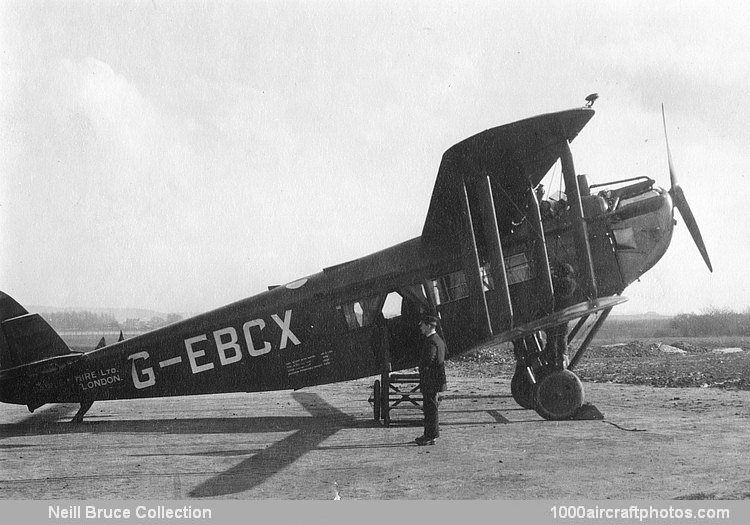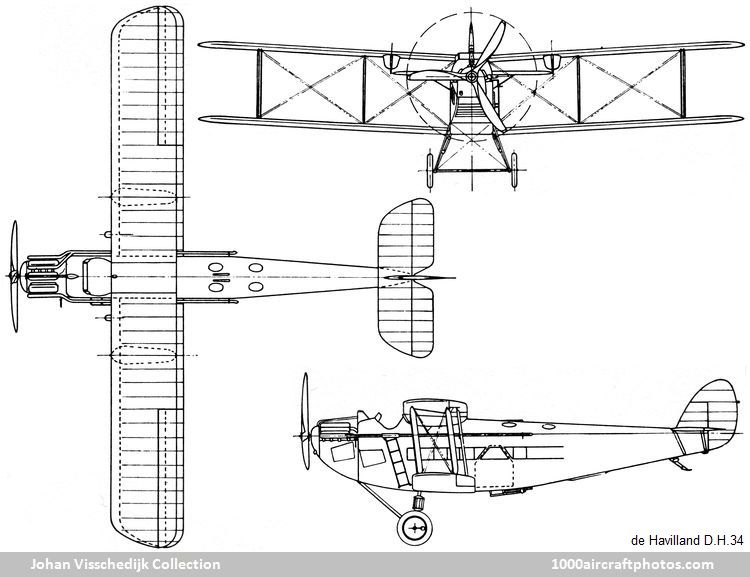08/31/2021. Remarks by Johan Visschedijk: "The D.H.34 made a significant contribution to the development of civil aviation in Britain despite the modest number of only eleven produced, as it consolidated the desirable features of earlier aircraft. Economics were being better understood, and the quest for greater speed and capacity had begun.
The airliner was a wooden two-bay biplane with an enclosed cabin for the eight passengers; the two crew were exposed to the elements in front of the wing. Power plant was a 450 hp twelve-cylinder liquid-cooled W-engine. Apart from its biplane layout, it was very similar in structure to the earlier D.H.29, but a unique feature was the capability of detaching the Lion power unit for servicing. A spare engine could also be transported in the cabin.
The D.H.34 was built to an Air Council Specification 17/21 for use by Daimler Hire and by Instone Air Line, the first aircraft being delivered to Croydon Airport, London, UK, for Daimler on March 31, 1922, only five days after its maiden flight on March 26. It entered service two days later, carrying newspapers to Paris. The second aircraft made its maiden flight, was delivered and entered service with Instone all before lunch on April 2, 1922. Daimler subsequently used six, and Instone four. One other was built for the Soviet airline Dobrolyot, it was shipped to the USSR in July 1922. These aircraft flew with great reliability and regularity over a number of European routes, achieving very high utilization, and being assisted by the modest subsidies then available. A twelfth aircraft was registered, but there is no evidence it was completed.
One of the criticisms of the aircraft was its high stall speed, and this was highlighted in a crash at Ivinghoe, Buckinghamshire, UK, on September 14, 1923, when the two crew and three passengers were killed. To overcome this problem the wing area was increased resulting in a 7 mph (11 kmh) reduction in landing speed, but two further crashes followed, with the second and fatal one at Croydon on December 24, 1924, under similar circumstances to the first.
Imperial Airways was formed on April 1, 1924, as a merger of the existing airlines, and seven surviving D.H.34s were absorbed into the fleet, two more of which were converted to D.H.34B standard with increased wing area. However, as Imperial Airways decided to only use multi-engined airliners for greater safety, the remaining D.H.34s were withdrawn from service by March 31, 1926, and scrapped at Croydon."


